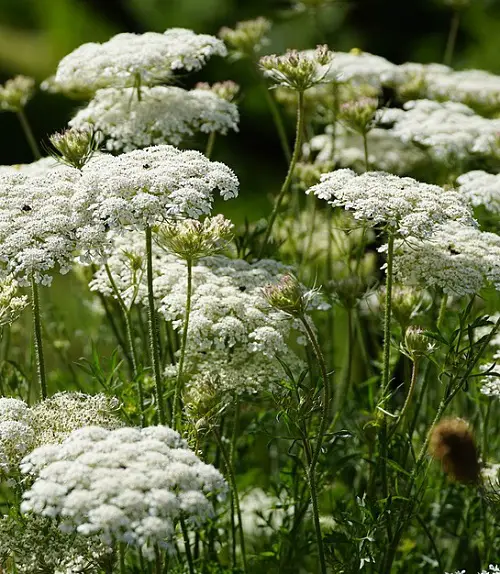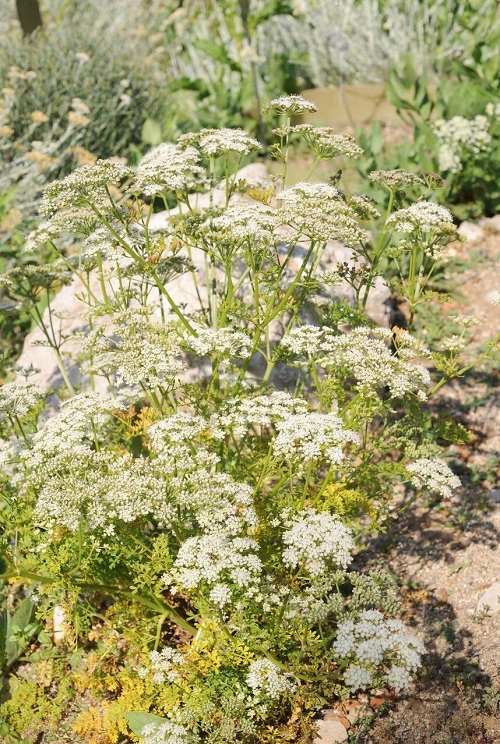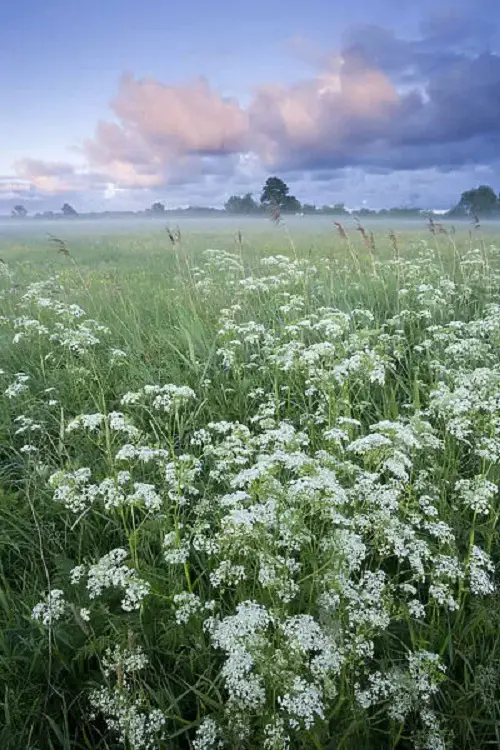Here’s a list of all the Plants That Look Like Poison Hemlock so you can identify them properly and steer clear of the toxic ones.
Have you ever been out for a hike and stumbled upon a plant that looked suspicious? Yeah, us, too. Poison hemlock is a nasty one, but there are other plants out there that can look pretty similar. Let’s break down a few common Plants That Look Like Poison Hemlock so you can explore with confidence!
Plants That Look Like Poison Hemlock
1. Queen Anne’s Lace
Botanical Name: Daucus carota
Queen Anne’s Lace and Poison Hemlock both have lacy white flowers. So, how do you tell them apart? It’s pretty simple. Poison Hemlock has clear green stems, but those of Queen Anne’s Lace are covered in tiny hair.
2. Elderflower
Botanical Name: Sambucus
Elderflower is another plant that can be confused with poison hemlock. They both have these big white flower clusters that look a bit like fireworks. You can tell them apart easily, though. Elderflower blooms are always high in flat or rounded bunches, but the flowers of Poison Hemlock are droopy.
3. Yarrow
Botanical Name: Achillea millefolium
Even Yarrow has white flowers in clusters–that’s what makes these plants look like Poison Hemlock. Yarrow’s leaves are feathery and fine, like leaves on a fern. Poison hemlock’s leaves are wider and more chunky, almost triangular. So you’ll know which is which.
4. Water Hemlock
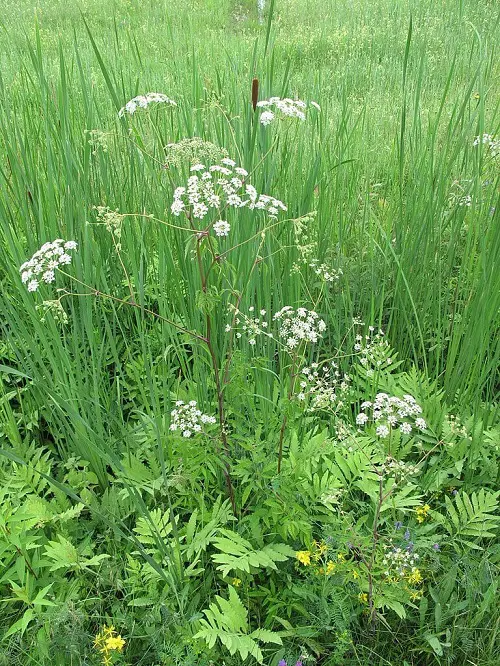
Botanical Name: Cicuta spp.
Unlike the others, Water Hemlock is a whole other level of poisonous, so it’s best just to avoid it altogether! It can look similar to a Poison Hemlock with white flower clusters, but a Water Hemlock loves water, so you’ll always find these near streams or ponds. Poison Hemlocks pop up anywhere.
5. Wild Parsnip
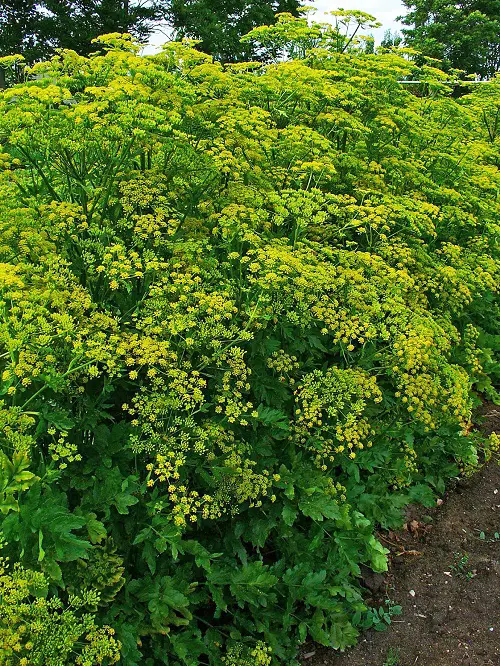
Botanical Name: Pastinaca sativa
Wild Parsnip is another plant that looks like a Poison Hemlock. Both plants have similar yellow flower clusters. Look closely at the stem to tell them apart. Wild Parsnip has stems with red streaks, but Poison Hemlock is plain green.
6. Cow Parsnip

Botanical Name: Heracleum maximum
Cow Parsnip has large, lobed leaves and produces large clusters of white flowers, just like a Poison Hemlock plant. But it generally grows taller and has a more robust appearance. Plus, it has hairy stems.
7. Pignut
Botanical Name: Conopodium majus
Pignut can be a little imposter when it comes to Poison Hemlock look-alikes. They both have delicate white flowers in clusters, and their stems are pretty thin and branch out a lot. You can tell both of them apart by the foliage. Pignuts have thin, long leaves, unlike the short ones that Poison Hemlocks have.
8. Osha
Botanical Name: Ligusticum porteri
Osha also looks just like a Poison Hemlock. But its stem is often brown and wrinkly. Plus, this one is perfectly safe to consume and has also been used by indigenous people as medicine for centuries.
9. Wild Chervil
Botanical Name: Anthriscus sylvestris
Here’s another plant that looks like Poison Hemlock–Wild Chervil. Wild Chervil has lacy leaves and white flower clusters, just like the Poison Hemlock. The only way to tell it apart is by looking at the base of the stems. The stems are a bit fuzzy there.
10. Ground Elder
Botanical Name: Aegopodium podagraria
Ground elder might trick you at first glance because it shares poison hemlock’s white flower clusters. But Ground Elder plants have flat and wide flowers and love to spread out over an area. Poison Hemlocks don’t spread that much.
11. Elderberry
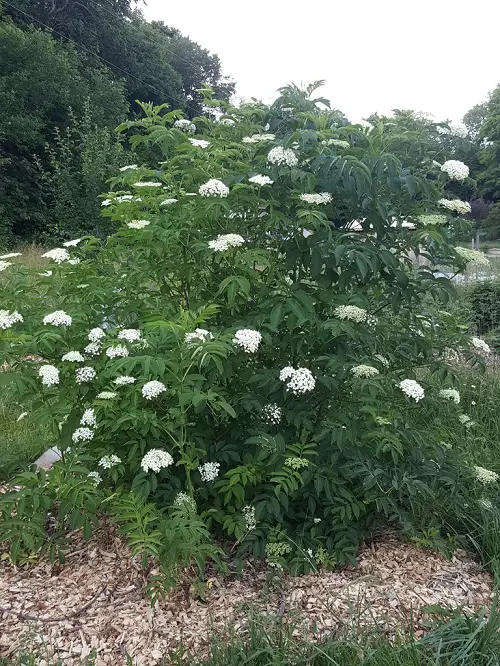 Botanical Name: Sambucus spp.
Botanical Name: Sambucus spp.
The foliage of the Elderberry plant makes it look like a Poison Hemlock. The flowers, too. Elderberries also produce small berries that can help you distinguish it from a Poison Hemlock. If you don’t see the berries, look at the flowers–they’ll be flat and not in umbrella-shaped clusters.
12. Angelica
 Botanical Name: Angelica spp.
Botanical Name: Angelica spp.
Angelica plants also look like Poison Hemlocks. But they don’t have the purple spots you sometimes see on Poison Hemlock stems. They are also pale green in color and not dark like Poison Hemlocks.
13. Fennel
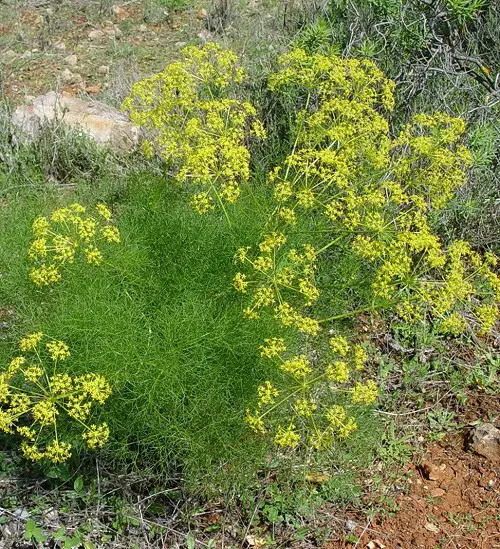 Botanical Name: Foeniculum vulgare
Botanical Name: Foeniculum vulgare
Fennel has feathery leaves and yellow flower clusters that Poison Hemlocks also do. But Fennel is actually quite useful and has a delicious licorice scent when you crush its leaves. Plus, the flowers it has are sunshine yellow and cheerful, not like the dull ones on a Poison Hemlock plant.
14. Lovage
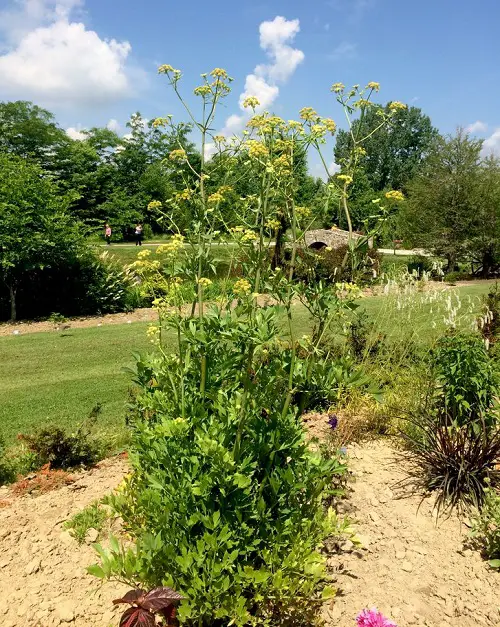 Botanical Name: Levisticum officinale
Botanical Name: Levisticum officinale
Lovage is also a Poison Hemlock look alike as they both have those big, lacy leaves that look fancy. But Lovage is stronger than Poison Hemlock. How so? If you give the stem of Lovage a slight squeeze, it won’t budge. But if you do the same with a Poison Hemlock, it will get damaged and break because it’s hollow inside.


